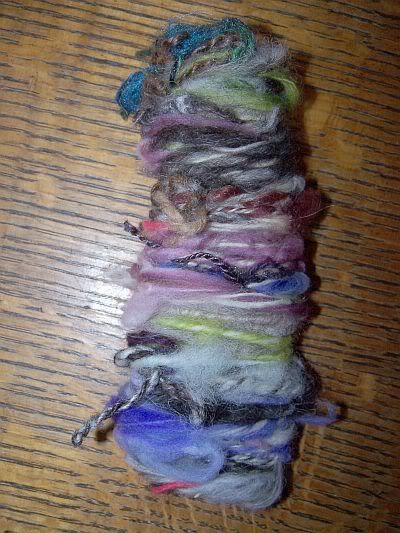
The following text can be found at: http://tolweb.org/Trichoptera
"The larvae, and the fascinating nets and cases they produce, represents the life stage most familiar to the non-entomologist, and the case-making behavior of some species may account for the English common name, caddisfly.
Although the origin of the word is obscure, it has been suggested to derive from cadaz or cadace (caddys), a word of variable spelling used in Shakespearean times to refer to a ribbon made from a certain kind of yarn sold by traveling vendors,
... who because of this were sometimes called "cadice men." Cadice men would pin samples of their wares to their clothing, a habit which may have suggested the name caddisfly or caddisworm for the aquatic larvae, who exhibit the analogous behavior of attaching bits of leaves and twigs to the outside of their cases (Hickin 1967). Hickin, N.E. 1967. Caddis Larvae. Hutchinson. London."
Project notes: After finding the caddis fly larvae in my watering pail, I was admiring the protective case that it made for itself. Having just purchased a new pair of spectacles, and needing a protective case for them, I decided to spin my own. I liked the method the caddisfly larvae used, and collected bits and pieces of of scrap roving and yarn that I have produced in the past (somewhat like a sampling of the work I have produced in the last few months). I inserted the tufts of leftovers into a ply to lock them in, then wrapped the spun yarn around a tube of hand lotion that was the approximate size that I wanted the finished case to be. I then used a wet felting method (for what seemed to be a longer time than I imagined it would be). When the fibers didn't lock as quickly or as securely as I intended, I let the case dry, and went back into it with the felting needle.






13 comments:
I adore the caddisfly. At my first job I spent a lot of time peering through a scope identifying aquatic macroinvertebrates. The caddis was my favorite. Their amazing homes, sometimes tiny sand sometimes bigger gravel, sometimes sticks, simply amazing, like little masons or carpenters. I could study them for hours. Awesome inspiration for a glass case.
How screamingly cool is that? I love all the colors and the little cocoon-like shape.
This may be one of my favorite posts, ever. You are so clever. I can't wait to try out your great idea. And the caddisfly.. did you get the inspiration after reading about the word origin or when you saw the casing? Beautiful interpretation.
The caddisfly are very cool. They are a phenological event for me.
The inspiration came when I found them in my watering pail and was admiring the casings and the colors. The icing on the cake was finding out about the word origin.
Sadly, I have been unable to find any more information about the Cadice men. If anyone can steer me in the right direction, I would love to know more about them.
Love the case...my glasses unfortunately have to stay on me otherwise I wouldn't be able to see them to put them on! If we ever have an earthquake here and the bedside table goes across the room I will be SOL!
What an inspirational blog entry - love the glass case!! I'm very impressed with your originality - how very very cool!
P.S. a very well-known fiber arts instructor told me that adding baking soda while wet felting can speed things up alot (but we won't go so far as to call it cheating!!)
Thank you for a truly lovely, educational, and inspiring post!
Clever!
Expectional post from beginning to end.
Submit it to Interweave!
That so cool!! What a fun article, I agree, you need to send it somewhere. I would so much want to write my patterns this way(a story, instead of a math problem). ;0)!!
What a creative response!!! Beautiful glass case!
What a wonderful story, and great way to use up those little bits of precious handspun and odds and ends of fiber!
Oh , Oh came over from Weekend Whorls to see what you have done with your 'odds'
Loved the story behind the name and whata great idea to wet felt bits :) I won't throw any teensy bits away in future but I do ball up larger left over singles and add them to the knitting of that spun yarn if I feel its a tad uneven !!
This is absoolutely terrific! And I love the inspiration; reminds me of al those biology classes wading around in creeks!
Would you consider writing this up for Fiber Femmes?
Post a Comment